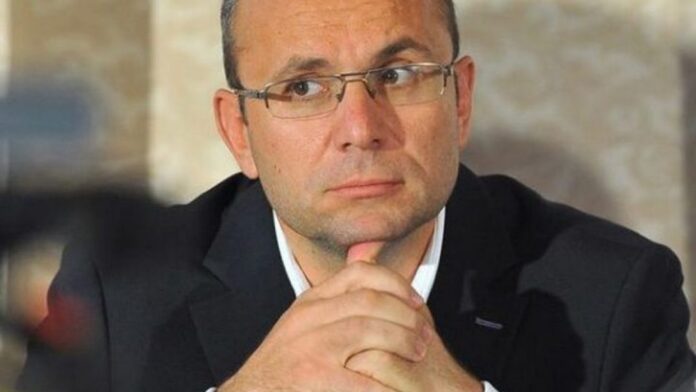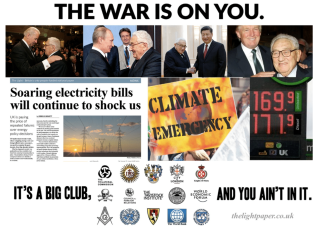Author: Cozmin Gușă
I promised I would post an analysis of Romania’s current situation in the aftermath of the Trump–Putin negotiations today. I will do so, including some extremely necessary recaps to understand today’s geopolitical context in Romania and the region, of course with an eye toward forecasting the short- and medium-term future.
In 1989, it is no longer contested that the USSR decided the controlled implosion of the communist bloc. The ones who suffered most were Romanians and Ceaușescu regime’s Romania, where many people had to die so that the joint goal of the USSR and the West could be fulfilled. Control of the region thus returned first to the USSR, and after 1991, to the Russian Federation, at the time of the USSR’s dissolution.
Russia received repeated assurances from every American president that NATO would not expand into former communist countries. During that period of reassurance, Russia collapsed more and more under Boris Yeltsin, a weak and compromised president.
That was the backdrop when Vladimir Putin appeared on the last day of 1999. From 2000, Putin sought to reconcile with the “Collective West,” led by the U.S., in an attempt to save his country, which was already marked for partition by Western High Finance. This was the context of the 2001 NATO Rome summit, when the NATO–Russia Council was created, and Putin even floated the idea of Russia joining NATO.
Then came 9/11, which cemented U.S. global dominance. Putin even wrote George Bush a now-famous letter, calling him “Brother George.”
NATO’s enlargement had already begun: the 1999 wave brought Hungary, Poland, the Czech Republic, and Slovakia into NATO, despite promises otherwise. In fact, NATO’s expansion was the main reason someone like Putin rose to power in Russia. After 2000, Romania and Bulgaria also entered NATO. For Russia, however weak it was then, this was too much.
Consecutively, we saw the Ukrainian Maidans and the so-called “Orange Revolution,” against Russian interests, mirrored in Romania in 2004 through the “orange uniforms” of Traian Băsescu’s campaign. Russia stayed quiet, suffered, but under Putin and the siloviki, began rearming discreetly and effectively. It also started regaining control of the Black Sea: Georgia in 2008, Crimea in 2014.
The U.S. responded by arming Ukraine and reviving neo-Nazi-type battalions like Azov. Finally, in June 2021, came the famous Geneva negotiations between Biden’s and Putin’s teams, with hundreds of representatives each. From those talks, Putin concluded he was being strung along and prepared as prey for the “Collective West.” It was then that the prospect of the Ukrainian war became tangible.
The U.S., underestimating Russia’s technological and organizational modernization over 20 years, as well as the solidity of the Putin–Xi partnership, treated the coming war lightly, counting on feeble EU states and Britain. They thought the Collective West could easily beat Russia, backed by economic tools. They miscalculated, believing media manipulation alone would break Russia’s great-power image and weaken its partners’ trust. They relied on the “plandemic” experiment, thinking they had fooled the world with vaccines—but as it turned out, they hadn’t.
Today, the outcome is clear: the Collective West looks like a big flop. Ukraine is in ruins, while Trump’s America faces such real problems that it is forced to “geopolitically dance” with Putin’s Russia—today the pivot around which the fabric of the New World Order is being woven, with China as its solid partner.
This brings me back to Romania and its realistic outlook in this current context.
Romania today is in a situation similar to the first half of 1990—when, seemingly, Ion Iliescu’s provisional power ruled, but in reality, all orders came from Moscow, which had organized and approved the December 1989 coup.
In December 2024, 25 years later, another coup took place in Romania, this time piloted from Brussels (the capital of the “new USSR,” as I call the EU), but with explicit approval from the U.S., publicly expressed by Antony Blinken—again, from Rome, by coincidence. Romanians only went to vote; they did not protest in the streets against the illegal Constitutional Court decision.
(I remind you that on December 6, 2024, after the CCR ruling, I posted on social media that if democracy was not defended in the streets, it would be lost. I said then that there was evidence CCR judges and their accomplices could be arrested. That news is still circulating publicly. I had an understanding with Călin Georgescu that he would repeat my message that evening. But Georgescu betrayed me, telling Romanians to stay at home, not to defend their democracy. And so, the December 8 vote never happened.)
Fast forward: Trump took office in January 2025. Romanians hoped for justice from him. Instead, neither he nor his people (Vance, Hagseth, Rubio) ever spoke of Romania’s coup, though they knew it had been carried out with U.S. backing through the CCR. The May 2025 elections went on unchallenged, though massively rigged, as I’ve repeatedly shown. Trump acted blindly, relying on information from his son Donald Trump Jr., who is financially backed by Victor Ponta and Sebastian Ghiță—the main architects of Nicușor Dan’s presidency.
Russia, meanwhile, repeatedly emphasized that Romanian democracy had been crushed by the Collective West, including the U.S. It’s clear today that Russia was building the context for the current U.S.–Russia negotiations, begun in Riyadh in spring and continued in Alaska nine days ago.
Since December 6, 2024, France (through Macron and its agents in Bucharest) had seized control of Romania. Washington under Trump, and Moscow too, left them undisturbed—until August 15 of this year, when Putin put “Control of the Black Sea” on the Anchorage negotiation table.
For undeniable geopolitical reasons (which I won’t detail here, but you know them if you follow me), Russia will treat total control of the Black Sea as non-negotiable. What remains to be decided are the necessary actions and the future geopolitical format in the Black Sea region. Other actors, like Turkey or Western Capital, will enter the talks later, especially after Ukraine’s capitulation.
Thus, Romania has finally entered the operative geopolitical game—but only as an object of negotiation, not a rightful participant. That explains our absence even from the White House meeting with the “seven Euro-Atlantic dwarfs”—where even Poland was invited but declined due to internal political disputes.
Today, France and Macron are caught red-handed for assuming unapproved control in Romania. They await the final verdict of the Trump–Putin agreements on our region. The French hope to at least keep usufruct rights over some Romanian resources—critical for them now after huge losses in Africa. It is to be expected that Macron will court Putin for future rights in Romania, having already seen that Trump cannot help him in this matter.
I won’t comment today on the follow-up events from the Alaska negotiations—like Ambassador Muraru’s summons to the U.S. State Department, or American Embassy visits to the Electoral Authority, or even Tulsi Gabbard’s inquiry on Romania. These are relevant but not decisive now.
I reiterate only this: Romania’s leadership today resembles the early months of 1990. But the lever of power lies, for the moment, in the weak hands of EU representatives—the “new USSR”—a lever they will be forced to cede in the months ahead, as negotiations and the New World Order move forward.
And remember: Russia claims, non-negotiably, control of the Black Sea and will no longer accept a Romania hostile to Moscow. This is the key to interpreting future events.











